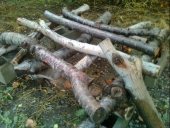
 2
2




turtle- slow and steady some of the time, occasionally snappy, infrequently introverted.




turtle- slow and steady some of the time, occasionally snappy, infrequently introverted.
 3
3




 3
3




turtle- slow and steady some of the time, occasionally snappy, infrequently introverted.

 2
2




Be joyful, though you have considered all the facts. ~Wendell Berry
 2
2




Iterations are fine, we don't have to be perfect
My 2nd Location:Florida HardinessZone:10 AHS:10 GDD:8500 Rainfall:2in/mth winter, 8in/mth summer, Soil:Sand pH8 Flat




Kim Goodwin wrote:What is "gorilla hair mulch"? Sounds fascinating. My mind asked if there was a zoo nearby, and if you could instead get some manure.
turtle- slow and steady some of the time, occasionally snappy, infrequently introverted.




S Bengi wrote:Here are my thought for your new garden in chronological order. I think you could do all of it this year
Soil-Water:
Add drip irrigation and swales
Soil-Carbon:
Add bio-char, woodchip, etc
Soil-SoilLife
Add compost, worm tea, pond/aquarium water, etc
Soil-CoverCrop
Add legumes, daikon radish, mint/thyme family, chive/onion family, dill/celery family
Plants-Shrubs
Add fast growing, native: blackberry/raspberry, and strawberry
Plants:
Every 10ft along the fence line/perimeter plant some fruit/nut trees
- Hybrid Persimmon, Pawpaw, Elderberry, Honeyberry, Gooseberry/currants/jostaberry, Blueberry, Sand Cherry/Beach Plum, Juneberry/Aronia/Mayhaw
- Jujube, Chicargo Hardy Fig, Dwarf Mulberry, Seaberry, Goumi
- Grapes-vine, Hardy Kiwi-vine, Artic Kiwi-vine, Maypop-vine, Abekia-vine,
- Almond, Hazelnut, Yellowhorn
- Asian Pear/Quince, European-Apple/Medlar, European Plums/Cherry/Apricot/Peach
*Plants in bold do okay in a semi-shady spot
turtle- slow and steady some of the time, occasionally snappy, infrequently introverted.
 1
1






 1
1




Iterations are fine, we don't have to be perfect
My 2nd Location:Florida HardinessZone:10 AHS:10 GDD:8500 Rainfall:2in/mth winter, 8in/mth summer, Soil:Sand pH8 Flat
 1
1








turtle- slow and steady some of the time, occasionally snappy, infrequently introverted.



 1
1




From under the mother plum tree.

|
He loves you so much! And I'm baking the cake! I'm going to put this tiny ad in the cake:
The new purple deck of permaculture playing cards
https://www.kickstarter.com/projects/paulwheaton/garden-cards
|







